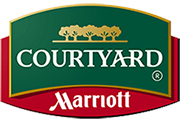
Pathogens are consistently introduced to the floor throughout the day by shoes, transport equipment such as wheelchairs and beds, treatment devices or computer carts, and non-slip patient socks that traverse the floors and frequently, directly into a bed. More importantly, there is a consistent potential for cross-contamination on the floor by an item expected to be clean and
often handled without gloves, a freshly laundered mop.
It was estimated in 2002 that 1.737 million HAIs occurred in hospitals in the United States that year resulting in 98,987 deaths, a rate of 5.8%.1 There were 39 million patient stays in hospitals during 2009.
During a survey of five Cleveland-area hospitals, researchers found floors in patient rooms to be frequently contaminated with HAI pathogens including Clostridium difficile (C. diff), found in 44% of rooms cultured after patient discharge cleaning and 53% with the patient housed in the room.3
In eleven Arizona hospitals, a study to examine the effectiveness of laundering cloth and microfiber reusable towels used in cleaning and disinfection of rooms after terminal discharge of patients, revealed that viable microorganisms were found on 93% of the towels after laundering.4
This study evaluated laundered microfiber mops from eleven hospitals and found that 27.3% of the newly laundered mops contained Microbial contamination, including hai pathogens

The microbiological tests on newly laundered flat mops resulted in seven mops (35%) with microbial contamination, as shown in Table 1. Three of the eleven hospitals’ mops were positive for pathogens, representing a 27.3% contamination rate as one of the hospitals was tested twice to confirm findings.
The microfiber mop has reduced efficacy as reuse and laundering takes place. The laundered microfiber flat mops, as shown above, show fibers that appear to be melted and carrying residual contaminants. These unknown contaminants would likely be reintroduced onto the floor surface the next time the mop is used.
Many hospitals are moving to single-use microfiber mops and wipes to help reduce the risk of HAIs from floor surfaces. Single-use mops remove the potential of crosscontamination with virgin microfiber in every use, while eliminating the risk of efficacy degradation through microfiber structural breakdown or pathogen retainage in the mop, as a result of an inadequate laundering process. As shown in Figure 2 and 3, additional tests were run to evaluate the potential of disinfectant neutralization on several brands of single-use and laundered microfiber mops.
Microfiber Mops in Neutralizing
Quaternary Ammonium Disinfectant
QUATERNARY COMPATIBILITY
(1 MOP in 400 ML of 400 PPM)

Microfiber Mops in Neutralizing
Chlorine Disinfectant
CHLORINE COMPATIBILITY
(1 MOP in 400 ML of 400 PPM)


Studies have shown that floors may harbor HAI pathogen organisms. These pathogens may not be
neutralized by using mops that bind disinfectants or may be transported through unexpected means, including socks or laundered mops damaged by the laundering process and reducing their ability to effectively clean and disinfect the floor. Inadequately laundered mops can be reintroduced to the hospital with remnant HAI pathogens.

To reduce HAI risk, hospitals should convert to single-use microfiber mops. This study evaluated
Advantex® (Brand A) and several brands of single-use microfiber mops and determined that differences vividly exist between brands on several critical criteria such as disinfectant neutralization, absorbency and dispersion/release efficacy, floor coverage, and wasted chemical solution. The fulllength microfiber mop case study and lab results are available upon request. As seen in ISSA Today – September 2017 (by David Harry and Jack McGurk, MPA).
The GPS G8’s, large-capacity removable tank makes refilling easy. The dual outlet dispenses to provide uniform application and flow control. The frame swivels 360° to reach tight spaces. Patent pending.
Utilizes micro hook and loop fastening. Ideally suited for the Advantex® Single-Use Microfiber Mop.
Best-in-class, single-use microfiber mops. Eliminate the risk of cross-contamination.

Providing proper hand hygiene systems for your employees and guests has never been more vital...

Hospital Grade One-Step Cleaner Wipes BCI is Now Offering Diversey™ Avert® Sporicidal Disinfectant Cleaner Wipes...

Providing proper hand hygiene systems for your employees and guests has never been more vital...

Hospital Grade One-Step Cleaner Wipes BCI is Now Offering Diversey™ Avert® Sporicidal Disinfectant Cleaner Wipes...















